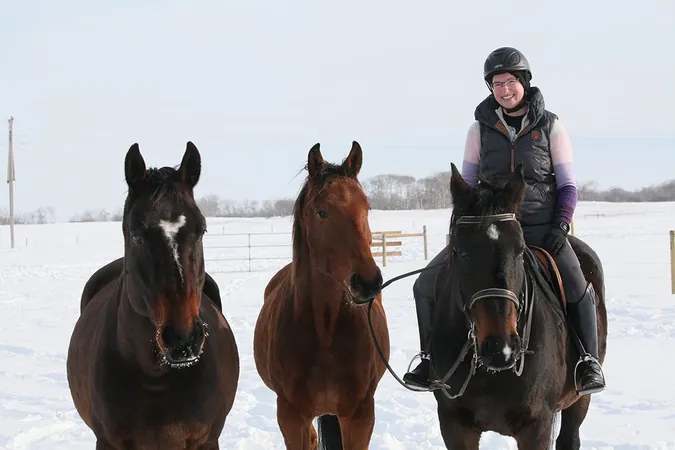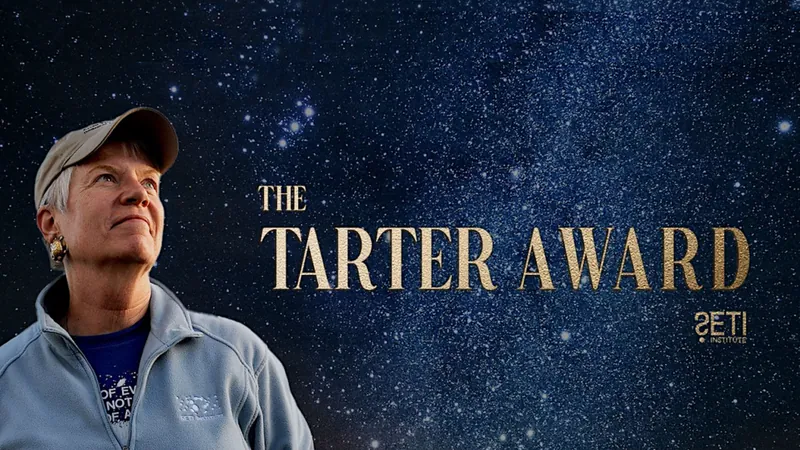
Equine Veterinary Researcher Makes Groundbreaking Discoveries Before Graduation
2024-11-13
Author: Olivia
SASKATOON — The passion for horses has always propelled Dr. Madison Ricard's journey from the competitive show-jumping arenas of her youth to the esteemed laboratories of the Western College of Veterinary Medicine (WCVM).
As she prepares to graduate with her PhD in anatomic pathology at the University of Saskatchewan (USask) on November 13, her groundbreaking research has already begun to make waves in the field of equine reproductive health.
Research Focus
Ricard’s doctoral dissertation delves into the alarming underexplored issue of chlamydial infections leading to equine abortions. This research not only provides critical insights into the reproductive health of horses but also has implications for veterinarians looking to enhance their understanding and management of equine pregnancies, a topic that has been relatively overlooked in North America.
Background and Motivation
Her motivation to work with horses drove her to pursue a career in veterinary medicine, beginning with her Doctor of Veterinary Medicine (DVM) degree from the University of Calgary in 2020. Drawn by the strong alumni network and the commendable reputation of WCVM, Ricard transitioned to Saskatoon for her residency training in anatomic pathology while simultaneously working towards her PhD.
Inspiration for Research
The specific research topic was inspired by a conversation with Dr. Bruce Wobeser, her supervisor at WCVM. Wobeser’s comment that "we don’t know much about equine abortion in Canada" intrigued Ricard and set her on the path to exploring the realm of reproductive pathology in horses.
Research Methodology and Findings
Ricard's comprehensive research began with a thorough retrospective analysis of past studies on equine abortions. She discovered a significant research paper from Australia that identified Chlamydia psittaci, a bacterium usually linked to birds, as a potential cause of equine abortions. Intrigued by this finding, Ricard hypothesized that similar cases might exist in North America.
Putting her theory to the test, Ricard and her team submitted 99 samples from equine abortions between 2009 and 2020 to Prairie Diagnostic Services. To their astonishment, a substantial 26 samples tested positive for Chlamydia species. Interestingly, they identified Chlamydia abortus, a pathogen more commonly associated with cattle and sheep, rather than the Australian strain.
Health Implications
The implications of Ricard’s findings are notable, given that C. abortus is not just a pathogen for horses but also a zoonotic threat—meaning it can be transmitted to humans. This raises serious health risks for veterinarians and horse breeders who may come into contact with infected tissues. “Handling aborted materials can pose real health risks if proper precautions aren’t taken,” emphasized Ricard, highlighting the necessity for using personal protective equipment.
Broadening the Research Scope
Additionally, Ricard’s research did not solely focus on infectious causes. She also examined non-infectious factors, such as umbilical cord conditions that can severely impact foals in their first month of life, thus broadening the landscape of equine reproductive health knowledge.
Raising Awareness
Beyond paving the way for future research, Ricard's work is elevating awareness among horse owners and breeders about the potential risks associated with equine abortions. "Most of my studies set the groundwork for continued exploration in veterinary pathology," Ricard stated, expressing hope that her findings will inspire others to pursue further research.
A New Chapter
In August, Dr. Ricard returned to WCVM, now as a lecturer in the Department of Veterinary Biomedical Sciences, where she teaches anatomy and histology—subjects she feels deeply passionate about. “I believe I have always had the heart of a teacher. Sharing the knowledge I have gained over the years is incredibly fulfilling,” she remarked.
Conclusion
As Dr. Ricard prepares to walk across the graduation stage, her pioneering research is already making waves in the veterinary community and leaving a lasting impact on equine health and safety protocols—one step closer to revolutionizing the future of veterinary medicine.









 Brasil (PT)
Brasil (PT)
 Canada (EN)
Canada (EN)
 Chile (ES)
Chile (ES)
 España (ES)
España (ES)
 France (FR)
France (FR)
 Hong Kong (EN)
Hong Kong (EN)
 Italia (IT)
Italia (IT)
 日本 (JA)
日本 (JA)
 Magyarország (HU)
Magyarország (HU)
 Norge (NO)
Norge (NO)
 Polska (PL)
Polska (PL)
 Schweiz (DE)
Schweiz (DE)
 Singapore (EN)
Singapore (EN)
 Sverige (SV)
Sverige (SV)
 Suomi (FI)
Suomi (FI)
 Türkiye (TR)
Türkiye (TR)